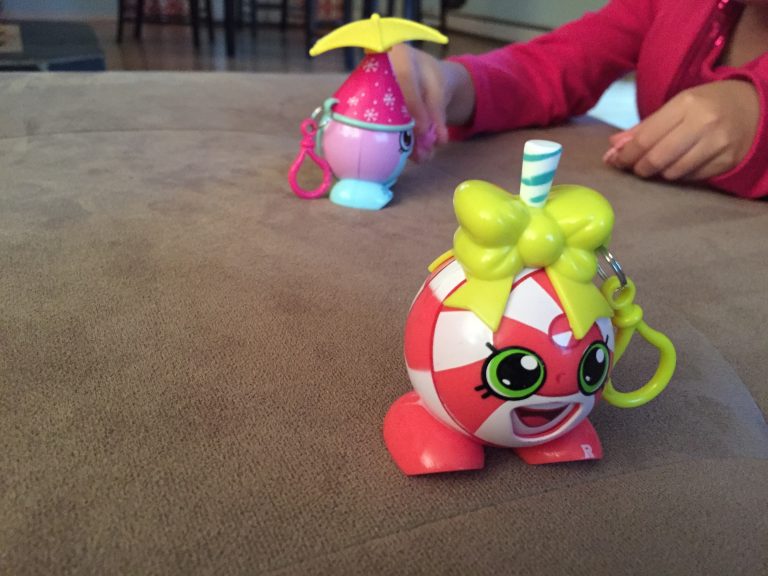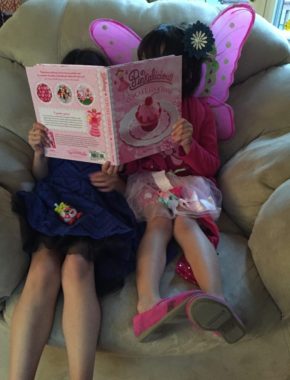
The American Academy of Pediatrics says most kids have a stable sense of gender identity by the time they are 4 years old. Rusty is one of them.
Rusty may have been born a boy, but she knows she is definitely a girl.
The 4-year-old is really focused.
“This is Shopkin,” she says, pulling out tiny, cartoonish plastic models of food and household items that are plastered with giant eyes and goofy smiles. “Shopkin. Shopkin poster, Shopkin oven… .”
She excitedly runs into her room and pulls open a drawer filled with them, extracting one of her newest.
“It’s a bone, and her name is Bone-a,” she says, explaining the small piece of yellow plastic shaped like a dog bone.
Even the pink walls of her bedroom are plastered with Shopkins stickers, though she has Princess stickers up, too. She doesn’t only like Shopkins.
Rusty’s older sister, Lola, 7, says this is a new look for Rusty’s room.
“It’s a pinkalicious! I’ll tell you what it used to be like. His bed used to be like a pirate bed. The curtains used to be blue. And this used to be like a town carpet.”
Rusty says she didn’t like the old room – it didn’t fit who she was. “I didn’t feel comfortable in my bed. That’s how it happened.”

Rusty didn’t feel comfortable in boy’s clothes, either.
She started stealing things out of Lola’s closet.
Lola says she was not happy about that because they were her dresses.
As soon as their parents started letting Rusty shop in the girls’ department, and Rusty left Lola’s clothes alone, Lola didn’t care.
“As long as he’s happy, I’ll be happy,” she says as she rifles through his clothes, pointing out which ones used to be her dresses.
That’s Jennifer’s theory, too. She’s the kids’ mom. Jennifer says the first time Rusty told her she was a girl was about a year ago.
“He corrects us if we call him a boy. If I say, ‘You’re my big boy,’ he’s like, ‘Ah, I’m a girl. Thanks.’”
At first Rusty just wanted to play with girls’ toys and dress up for fun. Rusty picked a princess cake and Hello Kitty decorations for her third birthday.
Jennifer says they didn’t think anything of it.
Then Rusty started fighting about clothes in the morning – she only wanted to wear dresses and was stealing from Lola. Eventually Jennifer bought Rusty girl clothing, and the fights stopped. Rusty declared that she is a girl. Jennifer says she and her husband are just going with what seems to be working.
“I don’t know that there should be a handbook, but there should at least be something easier to navigate through all this,” she says, laughing.
Jennifer says she’s learning as she goes. Last week, the day before the interview, Rusty’s pediatrician asked if Rusty preferred “he” or “she”. Rusty picked “she.” Jennifer is still trying to remember to change pronouns. She says it makes her realize she has so many more questions about what to do next.
“Do I have to tell people? Do I have to announce it to people? Do I want to hear what people have to say about that? I just want to be in my bubble. Like I’m not sure what to do with that. I told some of my close friends and they’re just like, ‘OK!’ but then it’s like do I tell the school? Do I tell the daycare? What do you do? I don’t know.”
When she first started posting photos of Rusty dressed as a girl on her Facebook page, she got mixed reactions. She pulls up an image on her phone, Rusty smiling with boyish short hair, a pink t-shirt, and pants plastered with pictures of puppies.
“I put this one on Facebook and I got a lot of feedback like why am I letting him do that and dadada.”
Despite that, Jennifer says she feels like her family is mostly in a safe, protected space. Only one close relative has rejected Rusty for identifying as a girl. But Jennifer worries that it won’t always be this easy. That’s why we’re only using their first names—she knows it’s important to talk about this because other people are experiencing it too, but she wants to protect her children. She thinks Rusty might have the same fears.
“Just before I told you that you could ask him whatever you want, I said, ‘Can Anne ask you about being a girl?’ And he was like, ‘No.’ And I said ‘why?’ And he said, ‘If I tell her, will she leave?’”
Rusty never explained why she said that.
Jennifer wonders what’s next for her child. What will Rusty’s school say when she starts kindergarten? Which bathroom will she use? But ultimately it comes down to just one thing:
“As long as he’s happy – she’s happy. Rusty’s happy. That’s all that matters. And to me Rusty appears to be very happy.”
Rusty runs past her mom, dressed entirely in pink with a tutu and sparkly wings, radiating confidence, and grabs the microphone to continue our first conversation.
“So I have a Shopkins stuffy, and it’s beautiful.”
